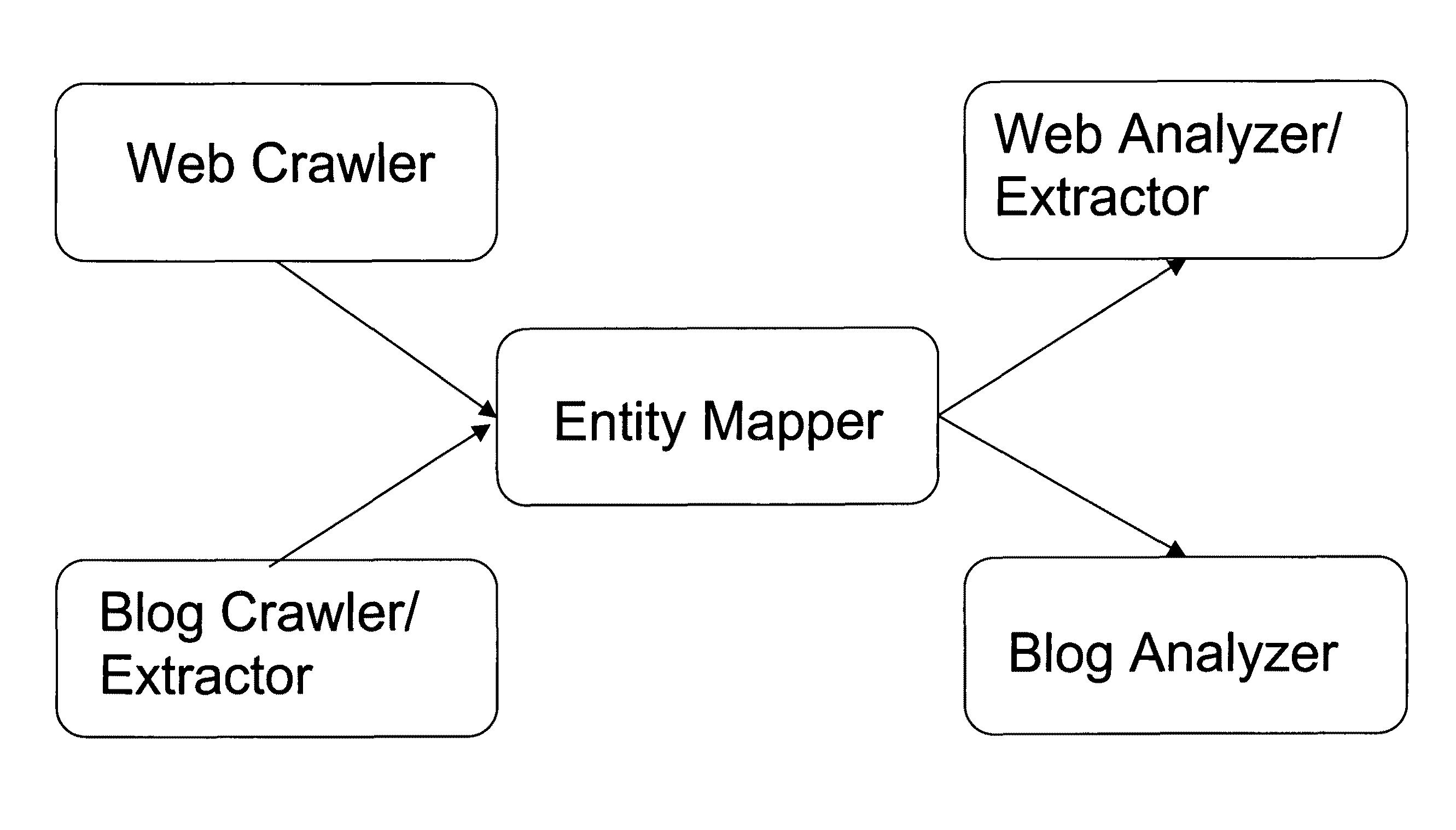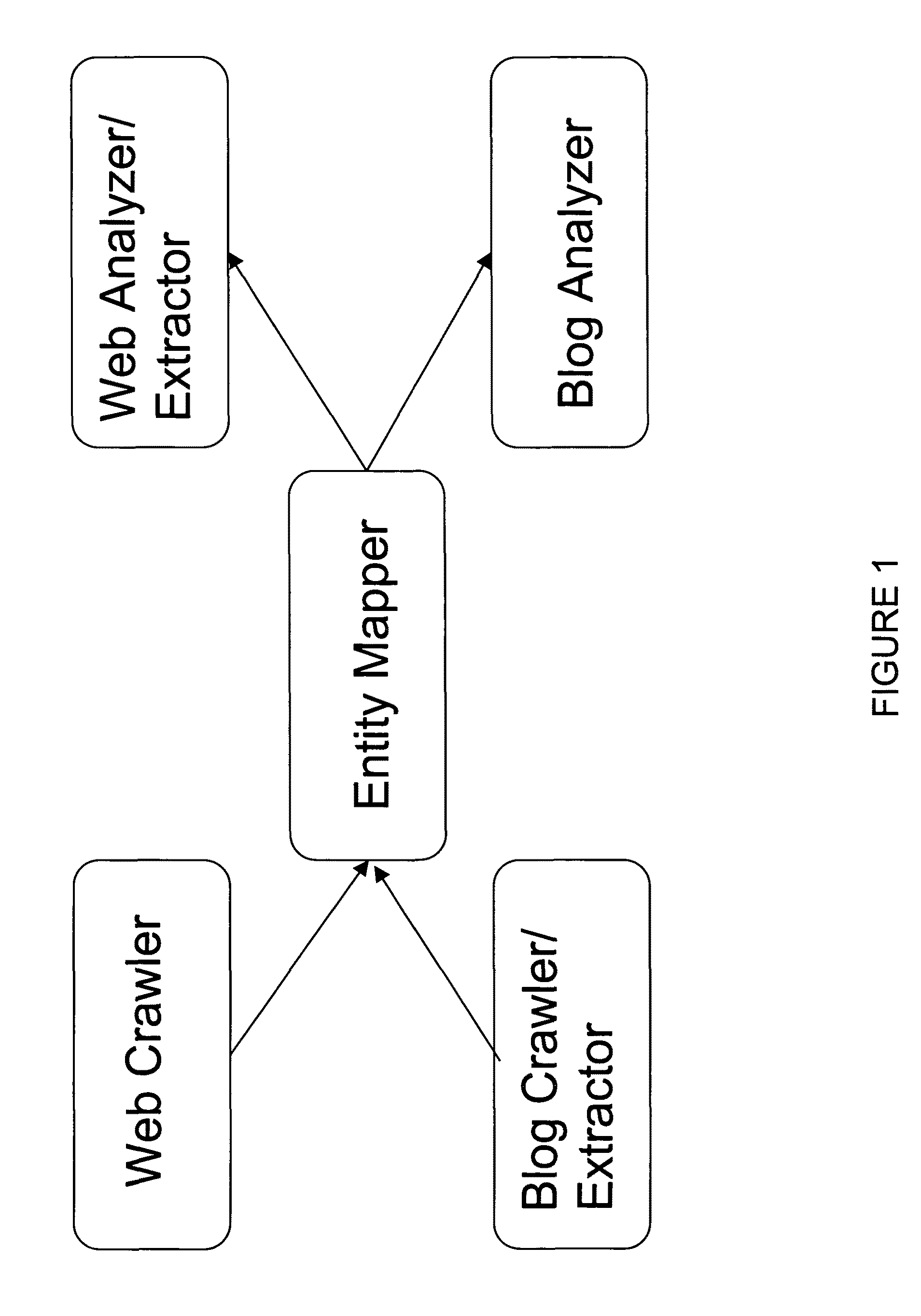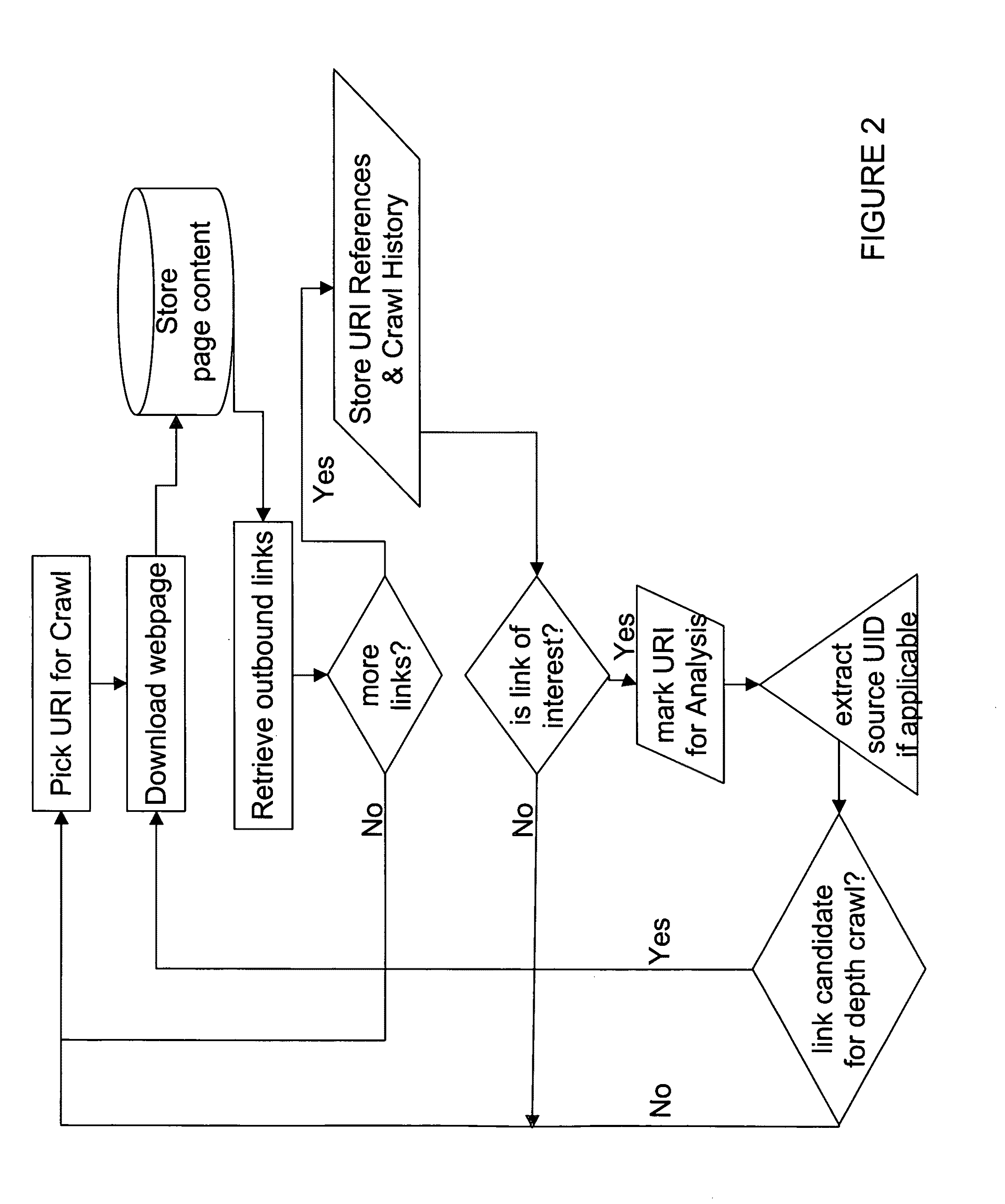Method and system for crawling, mapping and extracting information associated with a business using heuristic and semantic analysis
a semantic analysis and business technology, applied in the field of methods and systems for crawling, mapping and extracting information associated with a business using heuristic and semantic analysis, can solve the problems of imposing a significant burden and high overhead on the search engines that process this information, unable to return sites, and forcing users to construct long and complicated search expressions
- Summary
- Abstract
- Description
- Claims
- Application Information
AI Technical Summary
Benefits of technology
Problems solved by technology
Method used
Image
Examples
Embodiment Construction
[0061]In the detailed descriptions of the embodiments of the invention that follow, like reference numerals refer to like components in the various views, in which there is illustrated several embodiments of a new and improved method and system for crawling, mapping and extracting information associated with a business from multiple websites using heuristic and semantic analysis.
[0062]The invention is defined as employing heuristic and semantic analysis and, in the context of the invention, this is understood to mean that the method and process of the invention develop and employ an ontology and dictionary of terms associated with a given domain, such as restaurants, which are then used to instruct the invention in its process of gathering information about a local business. As a result of the use of this type of analysis, the invention can focus on collecting information that is most likely to be associated with a local business, as opposed to the results returned by a simple stati...
PUM
 Login to View More
Login to View More Abstract
Description
Claims
Application Information
 Login to View More
Login to View More - R&D
- Intellectual Property
- Life Sciences
- Materials
- Tech Scout
- Unparalleled Data Quality
- Higher Quality Content
- 60% Fewer Hallucinations
Browse by: Latest US Patents, China's latest patents, Technical Efficacy Thesaurus, Application Domain, Technology Topic, Popular Technical Reports.
© 2025 PatSnap. All rights reserved.Legal|Privacy policy|Modern Slavery Act Transparency Statement|Sitemap|About US| Contact US: help@patsnap.com



